Ristaino, J., and P. Peterson. 2002. Effie A. Southworth, First Woman Plant Pathologist Hired at USDA. The Plant Health Instructor. DOI: 10.1094/PHI-I-2002-0201-01.
Reviewed 2013
Jean Ristaino and Paul Peterson
Department of Plant Pathology,
North Carolina State University,
Raleigh, NC 27695
The Farlow Archives at Harvard University contain significant collections of letters written by prominent mycologists of the day. During sabbatical research at the archives a few years ago, Jean Ristaino uncovered a letter written by plant pathologist George P. Clinton of the Connecticut Agricultural Experiment Station to William Farlow, his former advisor and pioneering mycologist, at Harvard University (Fig. 1). Clinton writes on January 12, 1909:
|
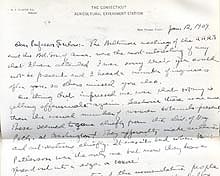
Fig. 1. Letter written by G. P. Clinton to W. G. Farlow, January, 12, 1909. Courtesy of the Farlow Archives and Herbarium, Harvard University. (Click image for larger view).
|
|
Dear Professor Farlow, The Baltimore meetings of the AAAS and the Botanical Society of America were the most interesting of any that I have attended. I was sorry that you could not be present and I heard a number of inquiries after you, so others missed you also. One thing that impressed me was that Botany is getting effeminate again. Leastwise, there were more than the usual numbers of women botanists present. These seem to come chiefly from the Division of Vegetable Pathology in Washington. They apparently make cultures and cut sections chiefly. It wasn’t bad when Flora Patterson was the only one, but now they have spread out into a dozen or more!
Clinton’s letter mentions Flora Patterson, who was hired in 1896, as an assistant pathologist at the USDA’s Division of Vegetable Pathology. His letter indicates that a number of women scientists attended the 1909 Botanical Society of America meeting and were employed at the USDA in Washington and elsewhere at the turn of the century. However, the presence of women in the inner circles of science was not yet fully accepted. This meeting is also noteworthy as the founding meeting of the American Phytopathological Society (3).
The Department of Agriculture had employed women prior to Southworth's arrival, but only in technical positions primarily to mount specimens. It was not unusual for women to take an interest in botany during the nineteenth century (Fig. 2). Some drew and painted beautiful illustrations of plant, fungal, and animal species. Women pursued botanical collecting and filled college classrooms, although these interests rarely translated into a career in science. Many of these women were hobbyists and not paid professionally for their work. This situation began to change in the late nineteenth and early 20th century (8,9,10). Southworth holds the distinction of being the first woman researcher hired at the USDA (Fig. 3).
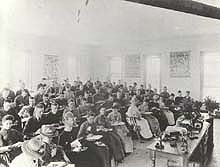 |
|
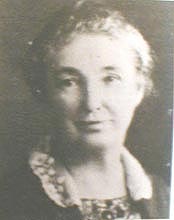 |
|
Fig. 2. Botany classroom, Iowa State University. Courtesy of the Iowa State University Library, University Archives. (Click image for larger view). |
|
Fig. 3. Effie A. [Southworth]
Spaulding. Courtesy of the
University Archives of the
University of Southern California.
(Click image for larger view). |
She was born in North Collins, New York in 1860. She attended Allegheny College for 1 year, studying Latin, German, French, mathematics, English, physics, and zoology prior to transferring to the University of Michigan. She continued studies at the University of Michigan in French, English, and German and also took classes in chemistry, astronomy, physics, geology, botany, physiology, history, and watercolor drawing. She earned her bachelor of science degree in 1885 and then accepted a two-year appointment as Fellow in Biology and instructor in botany at Bryn Mawr College (12). Bryn Mawr, a women’s college in Pennsylvania, had just been established in 1885 when Southworth joined the faculty. Women’s colleges were instrumental in training the first generation of women scientists in America and were among the first to hire women on their faculty (10). The description of her work at Bryn Mawr College stated:
“Miss Southworth began work in the Botanical laboratory about the beginning of the second semester. She took as a subject for special work, the mechanical system of plants, especially as exhibited in mono-cotyledons. She worked on the anatomical structure of certain plants, Alocasia, Banana, Palm, etc. This work was interrupted by news of a position in Washington and by the sending from there of specimens for her to work out, as evidence of her ability both as to theory and technique. She worked out partially, the development of one fungus, Asteroma, and made various drawings for publications. This with some miscellaneous work in classifying and collecting Phanerogerms, completed the work done.” (Letter courtesy of Bryn Mawr College Archives.)
In 1887, Southworth moved to Washington to take on her role as an assistant mycologist for the newly-created Section of Mycology in the USDA. She was hired on the recommendation of Erwin F. Smith (11) and the strength of her resume, which contained a long list of former professors who offered letters of credentials for her work (Fig. 4). Smith and Southworth were acquainted at the University of Michigan. In 1887, the Section of Vegetable Pathology occupied the third floor of the old administration building in Washington, DC (Fig. 5) and the staff consisted of Effie Southworth, Erwin F. Smith, and a third phytopathologist, Beverley T. Galloway (3). Smith was hired first, followed by Southworth and Galloway (3). Galloway later wrote “ Miss Southworth was appointed assistant on the first of November last. This is I believe the first time in the history of the department that a woman has been appointed to such a position” (Galloway to Spaulding, November 10, 1888, letter courtesy of the National Archives). Later, in 1888, David Fairchild was added to the staff and Galloway was promoted to section chief (Fig. 6). Southworth, Smith, and Fairchild focused on the etiology and control of fungal diseases during this time period.
|
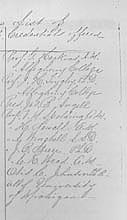
Fig. 4. List of credentials on Effie Southworth’s resume. Courtesy of Bryn Mawr College Archives, Mariam Coffin Canaday Library. (Click image for larger view).
|
|
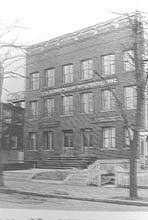
Fig. 5. Office of USDA Division of Vegetable Physiology and Pathology, ca. 1890’s. Courtesy of the National Archives. (Click image for larger view).
|
|
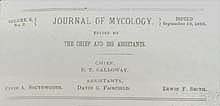
Fig. 6. Title page from the Journal of Mycology, September 10, 1890. Volume 6. (Click image for larger view).
|
|
|
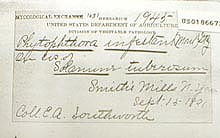
Fig. 7. Specimen label from a potato sample infected with Phytophthora infestans, collected by Effie Southworth in Smith Mills New York , Sept 15, 1891. Specimen from the National Fungus Collections, USDA, Beltsville, MD. (Click image for larger view).
|
|
Southworth was an expert microscopist, and at the USDA she became heavily involved in the study of fungal pathogens (13,19). A search of the USDA’s National Fungus Collections database indicates that at least 69 fungal specimens and four additional specimens of the oomycete pathogen Phytophthora infestans (Fig. 7) are still preserved that were collected, identified and deposited by Southworth into the USDA’s developing herbarium (Table 1, available as a PDF). Southworth’s work included collecting trips to the field in many cases, as indicated by the late blight specimen collected in Smith Mills, New York in Sept. 1891 (a letter from Southworth regarding late blight is available as a PDF).
Over several years, as an assistant mycologist, Southworth prepared numerous mycological publications on fungi that caused diseases of economically important plants including ripe rot of grape and apples (Fig. 8), and anthracnose of hollyhock (Fig. 9) (14,16,17,18). She also published with Galloway on the chemical treatment of apple scab and on the etiology of a destructive oat disease (5,6).
|
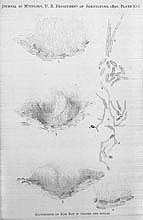
Fig. 8. Plate XVI from Southworth’s publication in 1891 on ripe rot of grapes and apples. J. Mycology 6:164-172. (Click image for larger view).
|
|
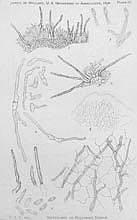
Fig. 9. Plate III from Southworth’s publication in 1890 on hollyhock anthracnose caused by Colletotrichum althaeae. J. Mycology 6:45-50. (Click image for larger view).
|
Perhaps her most significant contribution was an article in the 1891 Journal of Mycology on anthracnose of cotton (Fig. 10) (15). In this article she provided the first description of cotton anthracnose, caused by Colletotrichum gossypii. Southworth sent several specimens to other American mycologists, including Ellis and Cooke in New Jersey, for verification. They believed the pathogen was Gloeosporium carpigenum. The fungus was widely distributed in Ellis’s collection of North American Fungi under this name. Southworth obtained the type specimen of G. carpigenum from Harkness, a mycologist in San Francisco, and determined that the cotton anthracnose was not a Gloeosporium but a Colletotrichum species based on the presence of setae (Fig. 10). “There seems to be no record of any species name ever having been given it and I will call it Colletotrichum gossypii.” She described the external symptoms of the disease on cotton bolls and also tried to grow the pathogen in culture. Southworth inoculated bolls and reproduced the symptoms of the disease, thus carrying out Koch's postulates only a few short years after Koch's formal description of the concept. She recommended measures of control including sanitation and chemical treatments with Bordeaux mixture to growers in Louisiana and Alabama (15).
|
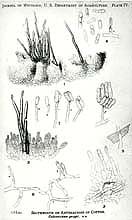
Fig. 10. Plate IV from Southworth’s publication in 1890 on anthracnose of cotton caused by Colletotrichum gossypii. J. Mycology 6:100-105. (Click image for larger view).
|
|
|
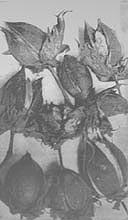
Fig. 11. Symptoms of anthracnose on cotton bolls from G. F. Atkinson, J. Mycology 6:173-177. (Click image for larger view).
|
|
Southworth noted in her paper of 1890 that G. Atkinson of the Alabama Polytechnic Institute in Auburn had also been investigating the anthracnose of cotton (Fig. 11). Southworth began working on the disease in the summer of 1888 when growers from Louisiana and Alabama sent her diseased plant specimens. Southworth said, “Since this article was prepared, Professor Atkinson read a paper on the same subject before the Association of American Agricultural Experiment Stations (AAES) at Champaign, IL. The work in both cases was entirely independent, except where I have cited Professor Atkinson’s authority in regard to the parts of the host attacked” (15). Southworth's work focused on boll infections and morphological descriptions of the fungus, while Atkinson examined the field symptoms of disease beginning in 1890. Atkinson sent Southworth a letter four days prior to his departure to the AAES meeting in Illinois on Nov. 7, 1890 where he spoke on cotton anthracnose, in which he stated, “as you are preparing an article for the J. of Mycology, you would not care to duplicate the subject by publishing also one from me. But I have made extensive field descriptions and watched and studied the disease for several months and I have I think a fine series of drawings showing its development and structure. I think they ought to be published somewhere in a complete form together with my observations. So I will find another means of publication, but would I chance to go to press before your published description appears, I will use your name of Colletotrichum gosssypii, Mon. n.sp, giving yourself authority for the species.” They exchanged letters over the next several months in which they discussed the disease including spore morphology and their observations on setae. Southworth’s paper on cotton anthracnose appeared in the Journal of Mycology before Atkinson’s paper (1,15). Atkinson stated in the last paragraph of his paper “ The Colletotrichum on cotton seems to have been hitherto an undescribed species. Since completing this work thus far I found that Miss E. A. Southworth had been giving the fungus some study, having had specimens of it on cotton bolls. She has proposed the name Colletotrichum gossypii, n. sp., which is eminently appropriate” (1).
It is unclear why, but in 1892, after 6 years, Southworth left the USDA and moved to New York to become an assistant in botany at Barnard College where she worked until 1895. Columbia University in New York had established Barnard in 1889 as the coordinate institution for women (10). Barnard hired many talented women scientists on their faculty (10). However, married women were not permitted to retain their faculty positions at Barnard (10). This may explain why Southworth left her position in 1895, when she married Volney Spaulding. Spaulding was head of the Botany Department at the University of Michigan and a leading botanical educator. Southworth spent the next nine years in Michigan working as Spaulding’s assistant (2). Southworth worked at the Desert Botanical Laboratory of the Carnegie Institute of Washington in Tucson, Arizona from 1905-1911 with Spaulding (4,7). Her research reports in the Carnegie Institute yearbooks between 1905 and 1911 indicate that at this point in her career she had shifted directions from the etiology of fungal diseases to studies on the physiology of the desert Saguaro cacti (Cereus giganteus)(4). Her association with Spaulding led to research trips to the Santa Cruz Valley in Arizona to study desert plants in their native habitats. Her work at the Desert Botanical Lab for the Carnegie Institute demonstrated that the size and shape of the giant cactus was controlled not only by water content but also by temperature and illumination (4).
|
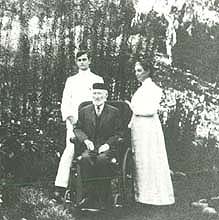
Fig. 12. Effie Southworth Spaulding with her husband Volney Spaulding and an unidentified individual, in Loma Linda CA, ca 1909. Courtesy of the National Archives. (Click image for larger view).
|
Due to ill health, Spaulding retired in 1909 and spent the remainder of his life in a tuberculosis sanitarium in Loma Linda, California (21) (Fig. 12). Southworth and Spaulding moved to the drier climates of Arizona and California were prompted when Spaulding contracted tuberculosis (7). Southworth joined the botany faculty of the University of Southern California after Spaulding’s death in 1918. In 1922 she completed a Master of Science degree in Botany at the age of 62. Her thesis was titled “Form Alterations and Growth in Cacti” (courtesy of the University Archives, University of Southern California, Los Angeles). She is listed in the faculty catalogs as a professor at the University of Southern California and was named Honorary Curator of the Herbarium in 1938. Her last entries into the herbarium records appeared in 1946 and early 1947 when Southworth was 87 years old. She died in April of 1947 in Los Angelos, California at the age of 87 (20).
Given the small number of women who reached positions of prominence in the earliest years of plant pathology in the United States, Southworth's important, if brief, tenure as a mycologist at the USDA stands out as a significant achievement for a woman during the formative years of plant pathology in the US.
Additional Resources
The authors have assembled a Collection of Links on Women in Science.
References
1. Atkinson, G. F. 1891. Anthracnose of cotton. J. Mycol. 6:173-177.
2. Barnhardt, J. H. 1965. Biographical notes upon botanists, 1903-1941. New York Botanical Garden, G. K. Hall and Co., Boston.
3. Campbell, C. L., Peterson, P., and Griffith, C. 1999. The formative years of plant pathology. APS Press, American Phytopathological Society, St. Paul, MN.
4. Carnegie Institute of Washington Yearbooks, No. 4-11, 1905-1911, Washington, DC.
5. Galloway, B. T. and Southworth, E. A. 1889. Treatment of apple scab. J. Mycol. 5:210-214
6. Galloway, B. T. and Southworth, E. A. 1890. Preliminary notes, a new and destructive oat disease. J. Mycol. 6:72-74.
7. Obituary of Volney Morgan Spaulding. Michigan Alumnus. 1919. 26:20-21.
8. Rodgers, D. P. 1981. A brief history of mycology in North America. Mycological Society of America, Harvard University Press, Cambridge.
9. Rudolph, E. D. 1982. Women in 19th century American botany: a generally unrecognized constituency. Amer. J. Bot. 69:1346-1355.
10. Rossiter, M. 1982. Women scientists in America. Struggles and Strategies to 1940. John Hopkins University Press, Baltimore, MD.
11. Smith, E. F. 1929. Fifty years of Pathology. Proceedings of the International Congress of Plant Sciences 1:13-46.
12. Southworth, E. 1887. Notes and News. Botanical Gazette 12: 171
13. Southworth, E. A. 1889. Gloeosporium nevisequum (Fckl.) Sacc. J. Mycol. 5: 51-52
14. Southworth, E. A. 1890. A new hollyhock disease. J. Mycol. 6: 45-50.
15. Southworth, E. A. 1890. Anthracnose of cotton. J. Mycol. 6: 100-105.
16. Southworth, E. A. 1890. Additional observations on anthracnose of hollyhock. J. Mycol. 6: 115.
17. Southworth, E. A. 1890. A new hollyhock disease (Colletotrichum althaeae). Amer. Naturalist 24, No. 286.
18. Southworth. E. A. 1891. Ripe rot of grapes and apples. J. Mycol. 6: 164-172.
19. Southworth, E. A. 1891. Notes on some curious fungi. Bull. Torrey Bot. Club 18:303-304.
20. Spaulding, E. F. 1947. Obituary. Los Angeles Times, Tuesday April 1.
21. Stafleu, F. A. and Cowan, R. S. 1976. Taxonomic literature: a selective guide to botanical publications and collections with dates, commentaries and types. Second ed. 7 vol. Regnum vegetabile vols. 94, 98, 105,110, 112,115-116.
Acknowledgements
Special thanks to Dr. Amy Rossman and Dr. David Farr, USDA, ARS, National Fungus Collections, Beltsville MD 20705-2350; Josephine Beagle, genealogist, Silver Spring, MD; Alan Whittemore, US National Arboretum; Don Pfister and Lisa DeCesare, Farlow Archives and Herbarium, Harvard University; and Gregory Parra, Clay Griffith and the late Lee Campbell, NC State University, for providing archival and bibliographical information for this feature.
